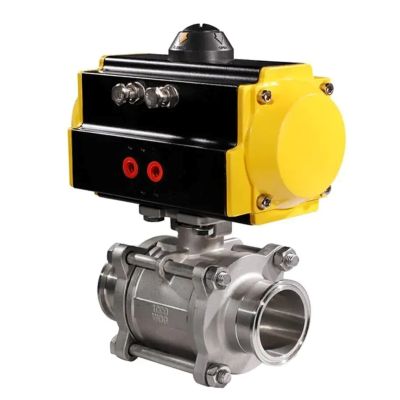


Corrosion-Resistant Pneumatic Actuators in Industrial Automation
Corrosion-Resistant Pneumatic Actuators in Industrial Automation
We Are a Leading Control Valve Manufacturer in China, Delivering High-Quality Valves and Actuators Customized for a Wide Range of Industrial Applications.
In industrial environments where corrosive elements are present, selecting the right pneumatic actuator is essential for ensuring long-term performance and operational reliability. Pneumatic actuators are widely used in valve automation systems across industries such as chemical processing, marine engineering, water treatment, and food manufacturing. However, exposure to chemicals, humidity, and salinity can degrade actuator components unless the materials and designs are carefully chosen.
The material composition of an actuator is a key factor in resisting corrosion. Different environments require different levels of protection, and materials must be matched to the application’s temperature, pressure, and media exposure.
Stainless Steel is a versatile and commonly used material.
304 Stainless Steel is suitable for mildly corrosive settings, such as food and beverage industries, where hygiene and resistance to weak acids and alkalis are needed.
316L Stainless Steel, containing molybdenum, offers superior resistance to pitting and chloride-induced corrosion. It’s ideal for harsh environments like coastal facilities and marine applications, where constant exposure to saltwater is common.
Specialty Alloys are required for extreme conditions.
Hastelloy is highly resistant to strong acids, oxidizers, and high temperatures, making it a preferred choice in petrochemical and pharmaceutical sectors.
Monel, a nickel-copper alloy, performs exceptionally well in seawater, hydrofluoric acid, and fluctuating chemical conditions, making it ideal for marine and offshore platforms.
Plastic Materials provide cost-effective options for less demanding environments.
Polypropylene (PP) is lightweight and resistant to dilute acids and alkalis, commonly used in lab systems and chemical dosing setups.
PVC offers excellent resistance to a wide range of chemicals and is used extensively in chemical wastewater systems operating at low temperatures and pressures.
Choosing the correct actuator type is as important as material selection. Pneumatic actuators vary in motion type and mechanical function, with each suited for specific applications.
Linear Pneumatic Actuators convert air pressure into straight-line motion.
Single-Acting Actuators include a return spring that brings the actuator back to its original position when air pressure is removed—ideal for fail-safe applications.
Double-Acting Actuators use air pressure for both extension and retraction, providing greater control and force for high-cycle operations such as in oil & gas and cleanroom automation.
Rotary Pneumatic Actuators produce rotational motion and are widely used with ball and butterfly valves.
Rack-and-Pinion Designs offer high torque and reliable performance in corrosive conditions.
Vane-Type Designs are more compact and offer smoother motion but typically deliver less torque.
Pneumatic Grippers are used in automated handling and robotics.
They come in parallel, angular, and three-point configurations to accommodate different object shapes and gripping needs—common in automotive and medical industries.
When specifying corrosion-resistant pneumatic actuators, consider the following:
Media Compatibility: Match actuator materials with the chemicals involved.
Temperature & Pressure Ratings: Ensure materials and design can handle the process conditions.
Environmental Exposure: For outdoor or marine use, select materials like 316L or Monel.
Motion Requirements: Choose linear, rotary, or gripper types based on movement needs.
Maintenance: Opt for materials and designs that minimize corrosion-related servicing.
Certifications: In regulated industries, select compliant materials (e.g., FDA-approved plastics or ATEX-rated actuators).
Pneumatic actuators in corrosive environments must be designed and built with material durability and mechanical suitability in mind. From stainless steel and specialty alloys to engineered plastics, the right material combined with the correct actuator type—whether linear, rotary, or gripping—ensures efficient and reliable automation. By aligning actuator features with environmental demands, industries can reduce downtime, extend service life, and maintain safe, consistent operations.Know more about Google SEO Directory
